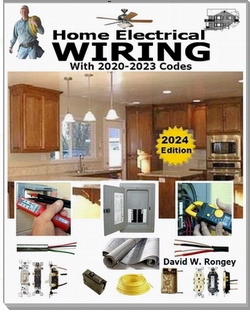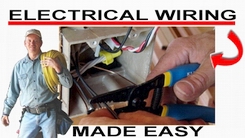Questions about Wiring a Basement
What would cause some Basement Outlets to Not Work?
Sue, a Handy Woman from Davenport, Iowa asks:
We just moved into a house and we have a finished room in the basement that has about 4-5 outlets. The outlets do not work on one side of the room all the way around. The other side of the room they do work fine. The lights on the wall have to be turned on by the switch on the light and they work. The light switches all work. I have checked the breakers and they are all okay. What could cause the other outlets not to work?
Dave’s Reply:
How to Fix Basement Outlets that do Not Work
Sue here are a few items that may help you get your outlets working:
Look for GFCI outlets and check to make sure they are not tripped, and reset as needed.
Turn off the circuit breaker that provides power to this area, then open the last outlet closest to the outlets that do not work and inspect for burnt wiring connections or any burnt portions of the outlet. Replace the outlet if it shows any signs of damage. Burnt or damaged wiring should be repaired by a licensed electrician.
Can the Romex brand wire be used when Wiring a Basement? Romex or metal cable: What should be used when wiring a basement and how is the wiring protected. NEC Code Article Sections 336-6c, 333-11
I am installing 3 new outlets in my basement. There is no extra breaker spot available in my box. Can I splice into an existing…
How to Install Smoke Detectors – Take the mystery out of smoke detector wiring for basements. Smoke alarms provide the earliest warning of both fire and smoke.
How do I determine how many circuits to use in a finished basement, excluding the bathroom, kitchen, and bar area? Circuit Planning for Basement Electrical Wiring.
Cook Top Electrical Circuit Requirements – You can only supply 240 volts to a 2 burner 240 volt cook top, and the circuit would need to be rated at the specifications of the cook top that you have.
Planning for Basement Electrical Wiring
Question:
I am trying to wire a basement bathroom. Power comes from panel to a light then another light then a switch.
Can I take power from that switch which is the laundry room and bring it over and use it to power a switched light, a separate switched fan and a GFI receptacle. If so, can you please explain and/or diagram.
Thanks
Answer:
Basement electrical circuit wiring should be planned out just as any other room of the home. The lighting may be continued as a branch of an existing light or general purpose circuit as long as there is enough circuit capacity to support the additional added load.
Bathroom GFCI outlets however, must be wired as a dedicated 120 volt, 20 amp circuit or be added to an existing 120 volt, 20 amp bathroom outlet circuit. |
















